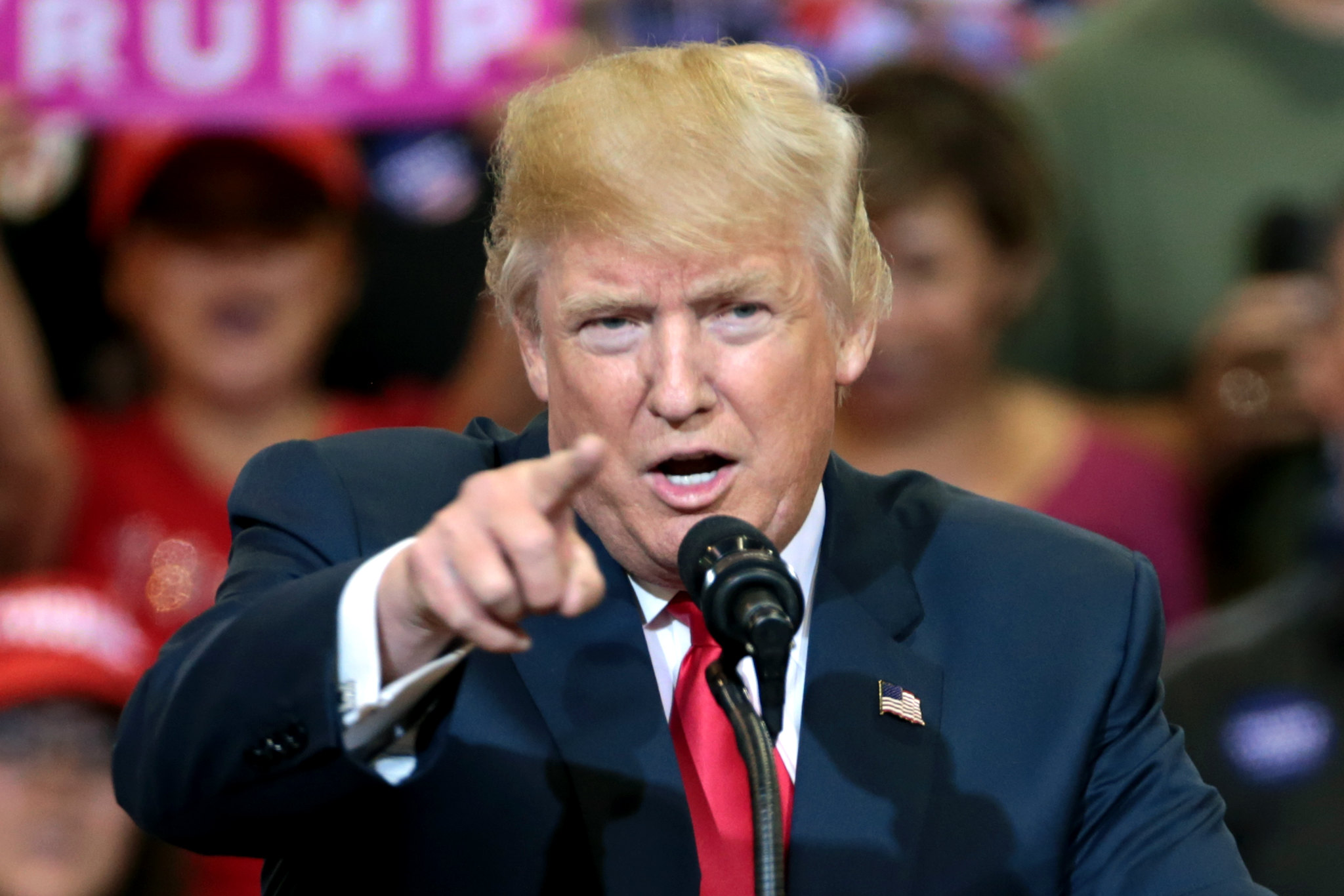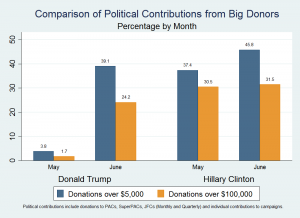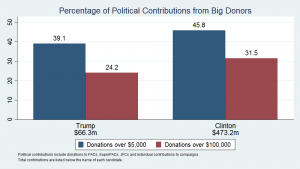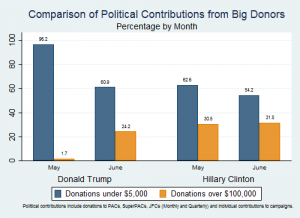24.2 percent of Trump’s campaign contributions came from donors who gave $100,000 or more, as of late June. In May, large donors accounted for only 1.7 percent of the contributions received by the Trump campaign
Donald Trump has spent months promising to self-fund his campaign. As late as April, Trump’s proclamations of independence from his party’s big donors (and his mockery of candidates who pursued contributions from billionaires) were still a staple of his campaign: proof that as president he would not be beholden to special interests.
Trump has since reneged on that promise and began courting big donors after securing the GOP nomination, but his efforts have taken some time to bear fruit.
In June, however, Trump dramatically increased his reliance on big donors. The latest update of the Campaign Financing Capture Index—a Stigler Center project that tracks the attempts of large political contributors to affect public policy by focusing on the fraction of total funds raised from large donors—finds that 24.2 percent of the contributions to Trump’s campaign have come from contributors giving more than $100,000.
In May, donations over $100,000 accounted for just 1.7 percent of Trump’s fundraising:
According to the most recent data, Donald Trump’s campaign, along with PACs, super PACs, and joint fundraising committees that support it, raised $66.3 million as of June 30. Of those contributions, 39.1 percent were over $5,000 (compared to 3.8 percent a month earlier). Hillary Clinton’s campaign, on the other hand, raised $473.2 million during that time, with 45.8 percent coming from donors giving more than $5,000 and 31.5 percent from donors who gave over $100,000.
While Trump did make significant headway in his efforts to court big donors, Clinton remains the presidential candidate with the largest share of big donors: as of late June, 54.2 percent of her campaign contributions came from donors giving less than $5,000, compared to Trump’s 60.9 percent. Before June, donations under $5,000 accounted for 96.2 percent of Trump’s fundraising. Despite his growing appeal with big donors, Trump’s campaign is still heavily reliant on smaller, direct mail and digital donations.
Although he is still having difficulties recruiting some establishment GOP donors, the past two months have seen Trump narrow the fundraising gap between himself and Clinton, particularly thanks to his joint fundraising operation with the Republican National Committee.
Trump Victory, his joint fundraising committee with the RNC, has raised $25 million as of June 30, with 60 percent of its fundraising coming from donations over $100,000. Great America PAC, the main super PAC supporting Trump, raised $1.2 million in June, down from $1.4 million in May. Its biggest contribution came from the Texas-based RHS Investment LLC, which gave $250,000.
Hillary Clinton’s main super PAC, Priorities USA Action, raised $7.8 million in June, with $7.3 million coming from donations over $100,000. The biggest donation came from financier Donald Sussman, who gave $2 million. Clinton’s newest JFC, Hillary Action Fund, raised $5.3 million as of June 30.
Launched in March, the Campaign Financing Capture Index analyzes the distribution of political contributions to presidential candidates and takes into account individual contributions and contributions made to the PACs, super PACs, and joint fundraising committees that support each candidate. It is our belief that large political contributions represent more than the mere expression of political preference and are more likely meant to influence policy in favor of the donor’s interest. When the percentage of funds raised from large donors is increasingly significant, as it has been in recent years, this problem becomes acute.
The analysis was done based on data collected from the FEC website, and comprises individual contributions made to campaigns, main super PACs, PACs, and JFCs since the beginning of the race until June 30. The Stigler Center will publish a concentration and distribution analysis every three months until the presidential elections.









